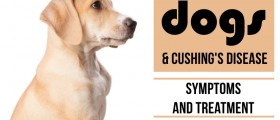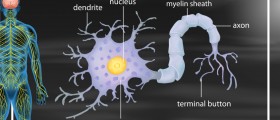
Vestibular Disease in Dogs
Vestibular disease represents any abnormality of the vestibular system, which is responsible for maintaining balance and moving through space. The receptors for the vestibular system are positioned in the inner ear next to hearing receptors. When the body moves through space, vestibular system receptors inform the brain about this movement. When the vestibular system is affected, the brain is unable to distinguish imbalanced body positions and correct them.
The vestibular system diseases can be classified into central vestibular disease and peripheral vestibular disease. Central vestibular disease results from some abnormality in the brain. On the other hand, peripheral vestibular disease is associated with abnormality in the inner ear nerves. Dogs are most commonly affected by peripheral vestibular disease known as idiopathic vestibular disease. Exact cause for development of this disease is unknown.
Signs and Symptoms of Vestibular Disease in DogsDogs of 12 to 13 years of age are particularly susceptible to vestibular disease. When a dog is affected by vestibular disease, the symptoms abruptly develop. It can be very frightening for the owner since the dog starts exhibiting following symptoms:Head tiltFalling to one sideRollingEyes darting from side to side (nystagmus)StumblingVertigoLack of coordinationNausea and vomitingAppetite lossDiagnosis of Vestibular Disease in Dogs
Because of the sudden symptoms of vestibular disease, dog owners usually believe that their dog has had a stroke or some sort of seizure. Luckily it is not true and vestibular disease is not a life threatening.
Veterinarian has to perform physical exam and the tests to eliminate possibility of disorders with similar symptoms. They include: infection of the inner ear, thiamine deficiency, injury to the head, antibiotic (metronidazole) toxicity, polyps in the middle ear and cancer of the middle ear. Also, veterinarian must find the cause of affected balance of the body system. If the cause cannot be determined, it is called idiopathic vestibular disease.
Tests necessary for making the diagnosis include: complete blood count, serum biochemistry test, urinalysis and other diagnostic tests such as CT, MRI, and x-rays or spinal tap.
Treatment for Vestibular Disease in Dogs
The initial treatment for vestibular disease depends on the symptoms observed in dogs and the cause of the disease. If there is an underlying cause of this disease, it should be primarily treated. Typically, idiopathic vestibular disease recovers on its own after one or two weeks. Idiopathic vestibular disease usually doesn’t require any special treatment. If the dog suffers from central vestibular disease, the treatment will be according to the cause of the disease. Dizziness in dogs can be alleviated by motion sickness medications.
















_f_280x120.jpg)
Your thoughts on this
Loading...